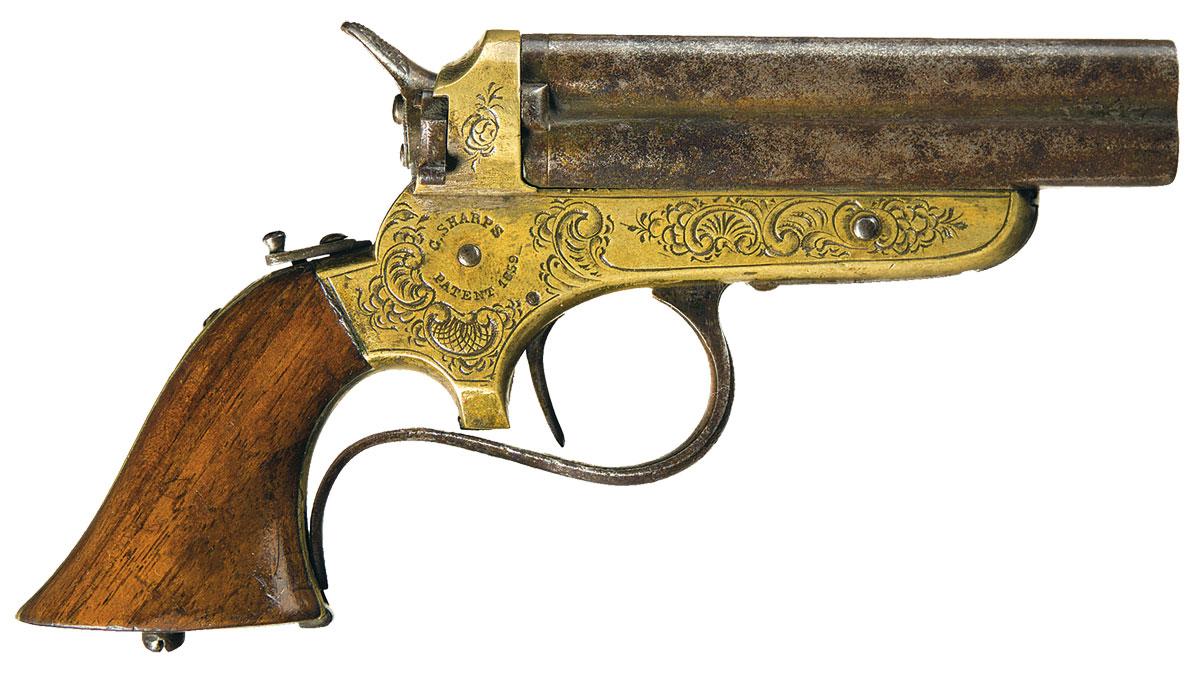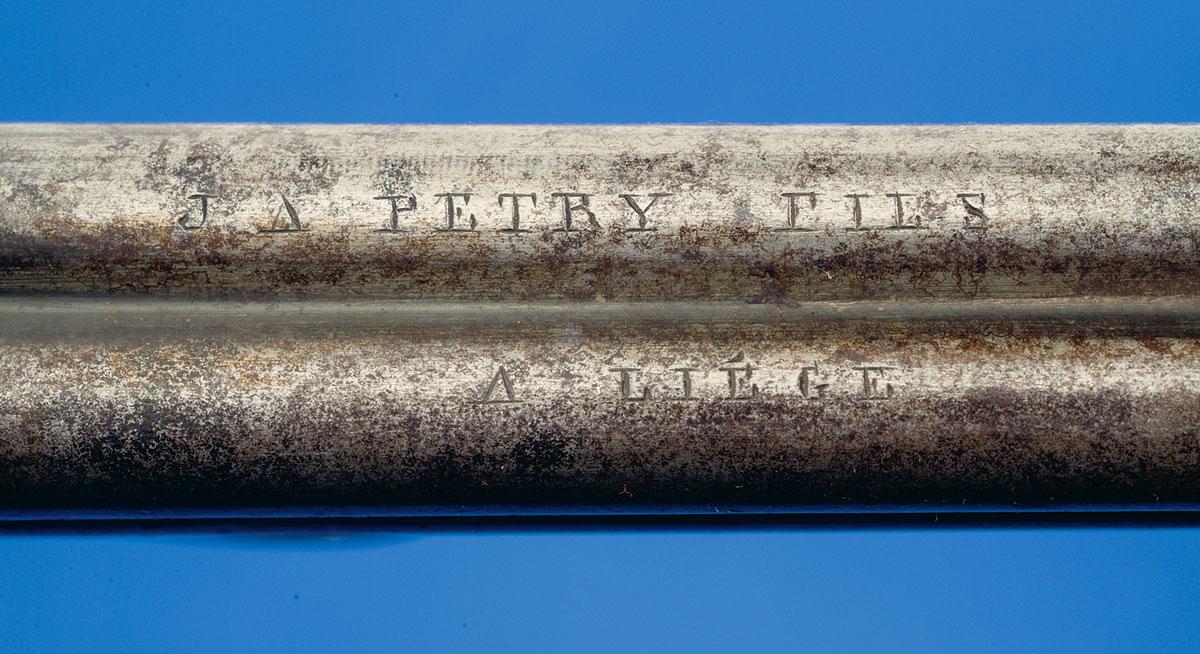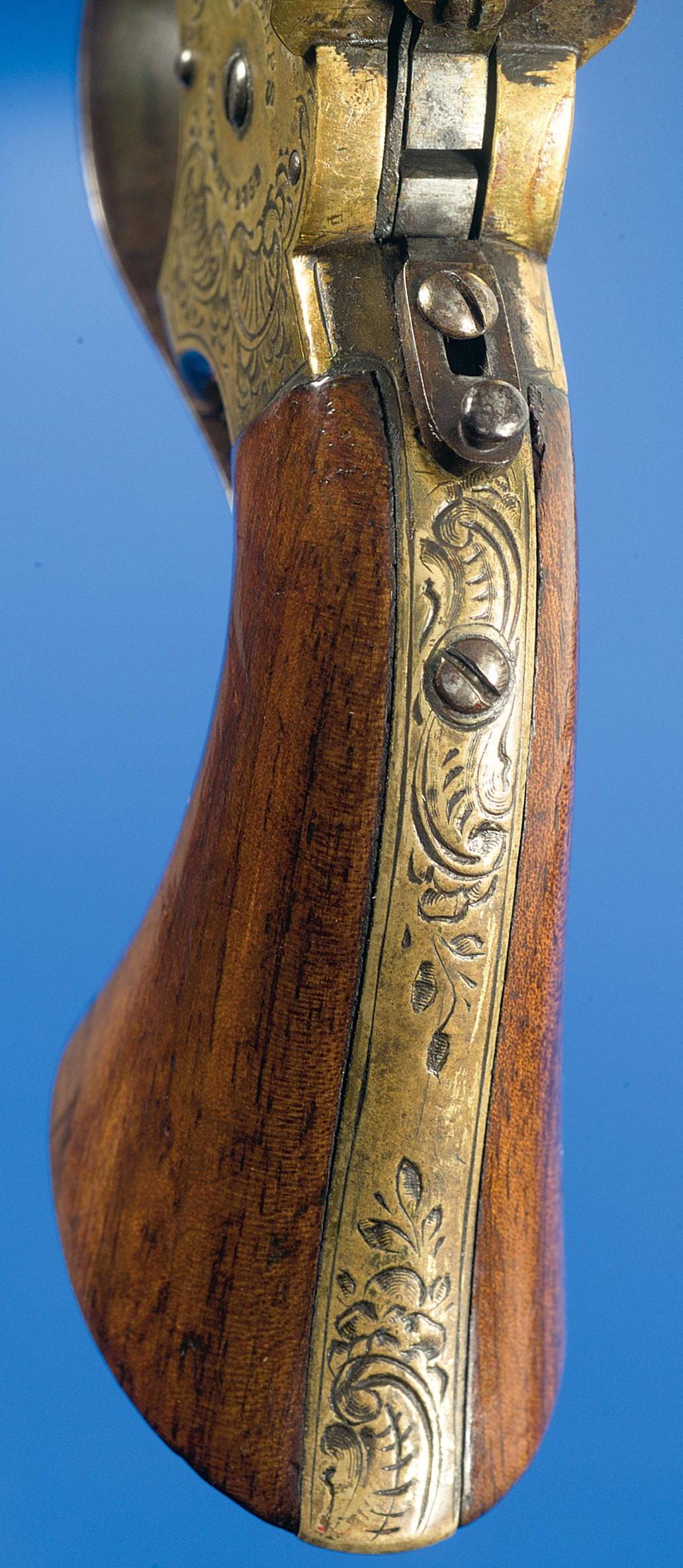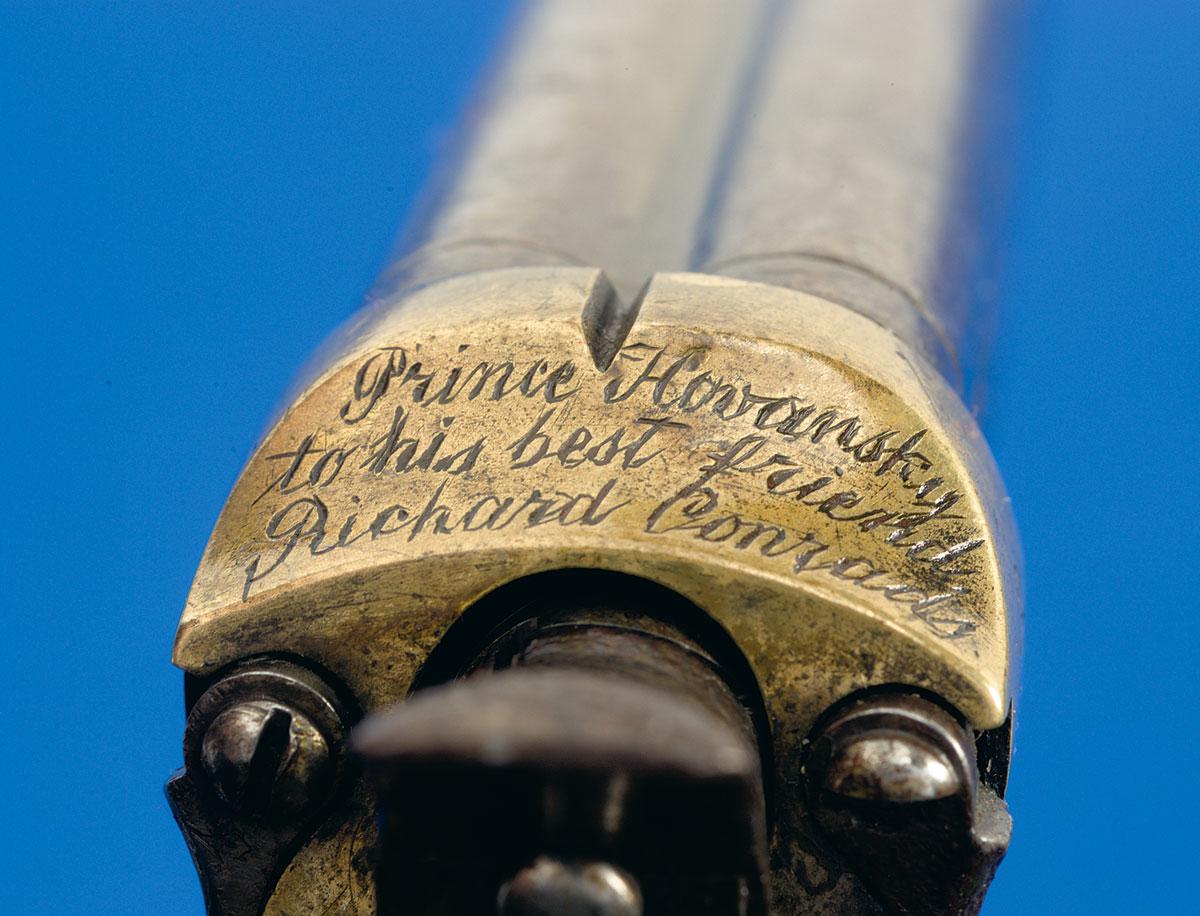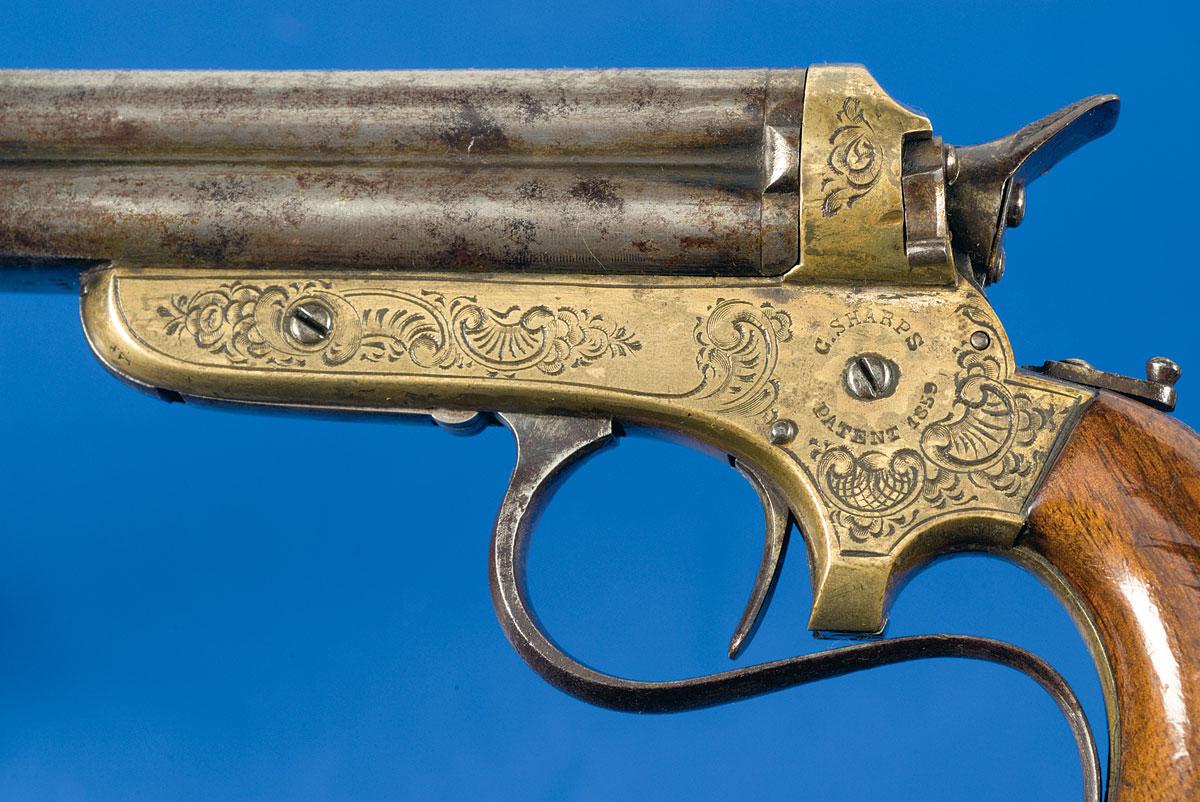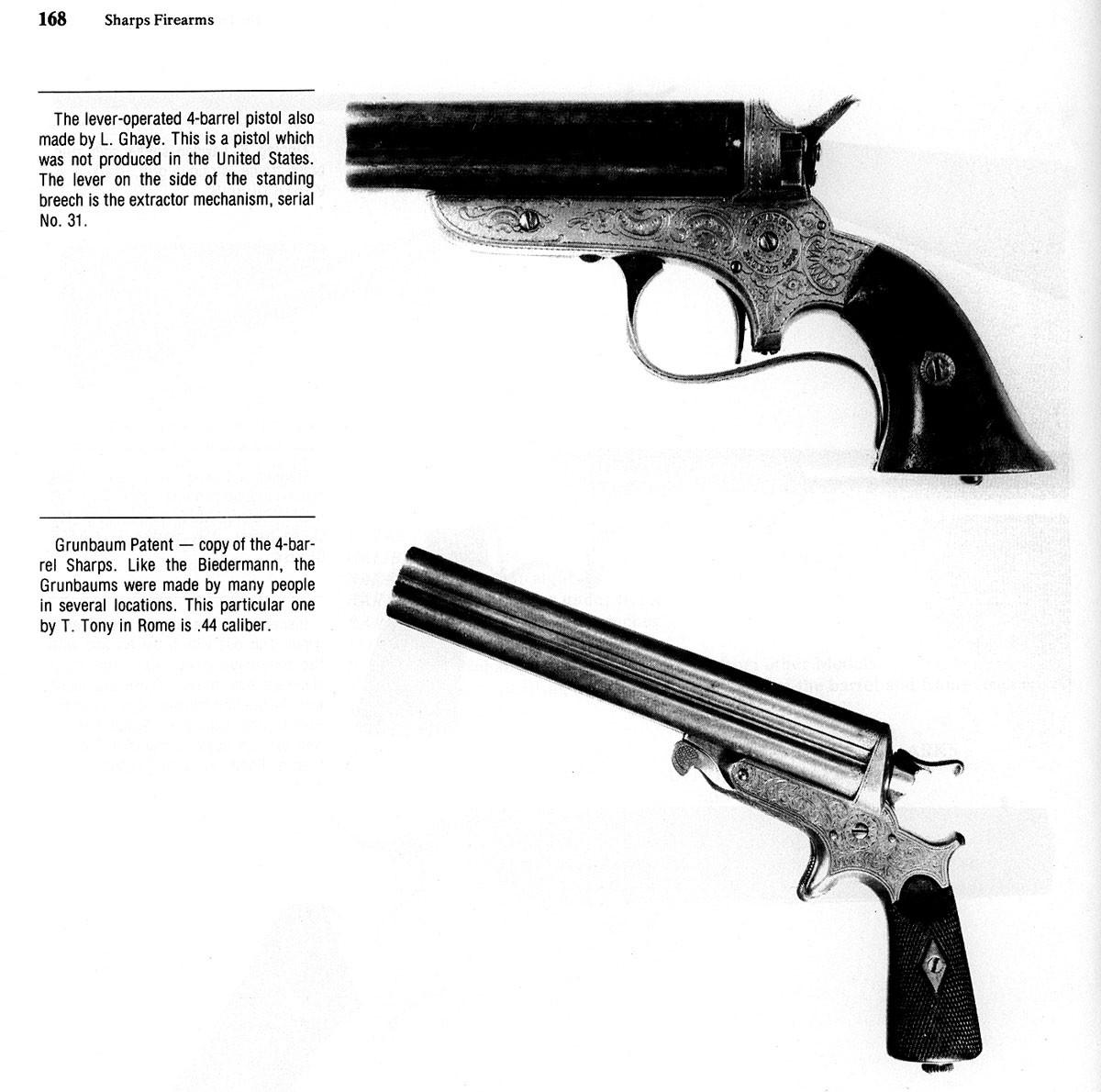Some of the most beautiful work of this craftsman, and many others, are in this book “Liège Gunmakers through their Work. 1800 - 1950”.
For more detail see: LIEGE GUNMAKERS
J. Auguste Petry
Here is a percussion rifle
for military use (tenon under the barrel to attach the bayonet to the socket)
bearing the name
JA Petry à Liège
on the rear plate.
The markings
ELG on star in oval: accepted between 1846 and 1893
C crowned: countermark of a controller between 1853 and
1877
CR: not identified
DR: Maybe a military check mark
2919 on the stock, probably the serial number of the
gun.
Jean
Auguste Petry was enrolled in the proofhouse of Liège from 1842 to
1867, which corresponds perfectly to the weapon in question. According to
Stockel and Jarlier/Buigné, he tested no less than 13,406 guns in 1856! We also
know that in 1862 he filed a patent for a bolt-loading rifle closure, which
unfortunately has nothing to do with the gun presented. He also took part in two
exhibitions, in Paris in 1855 and in New York in 1853.
GP









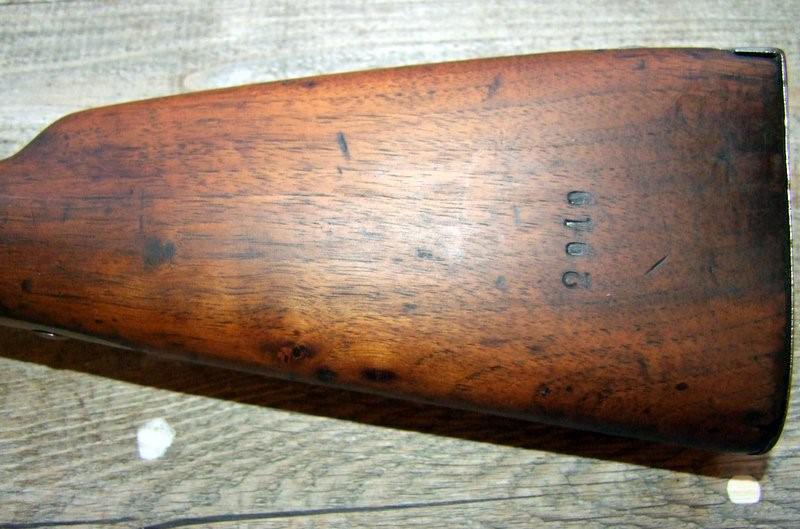
J. Auguste Petry
Here is a boxlock action percussion pistol made from
Liège, with octagonal steel barrel (approx. 13.2 mm in diameter), rocking rod
and bronze frame, marked
JAP, more than
likely the initials of
J. Auguste Petry,
active in Liège between 1842 and 1867.
The
markings
ELG on
star in oval: accepted between 1846 and 1893;
D under
crown: countermark of a controller, between 1853 and 1877.
GP with HPH




J. Auguste Petry
This is a percussion rifle. The only barrel is octagonal and has a
quarter-circle front sight. A step rise (not visible) is placed on this barrel.
The lock is of the “back” type and is placed on the right flank. The trigger is
curved and placed under bridge. The butt is "English cut". A metal rod slips
between the stock and the barrel. The butt is equipped with a metallic
buttplate.
Unfortunately, not all of the markings or hallmarks are clearly legible. I think
I can identify the following brands:
R crowned: could it be a mark of inspector of the Liège test bench in use from
1853 to 1877?
1968: Number of the gun?
1854: in my opinion this is the date of manufacture.
No. 152: gun number.
LV: meaning ignored, presumably the brand of a subcontractor
(gunner?)
J.A. Petry:
This is undoubtedly the brand of the Liège manufacturer
J.Auguste Petry. He was member on the
proofhouse from 1842 to 1867. He filed a Belgian patent for the closure of a
shotgun that was loaded by the breech.
GG

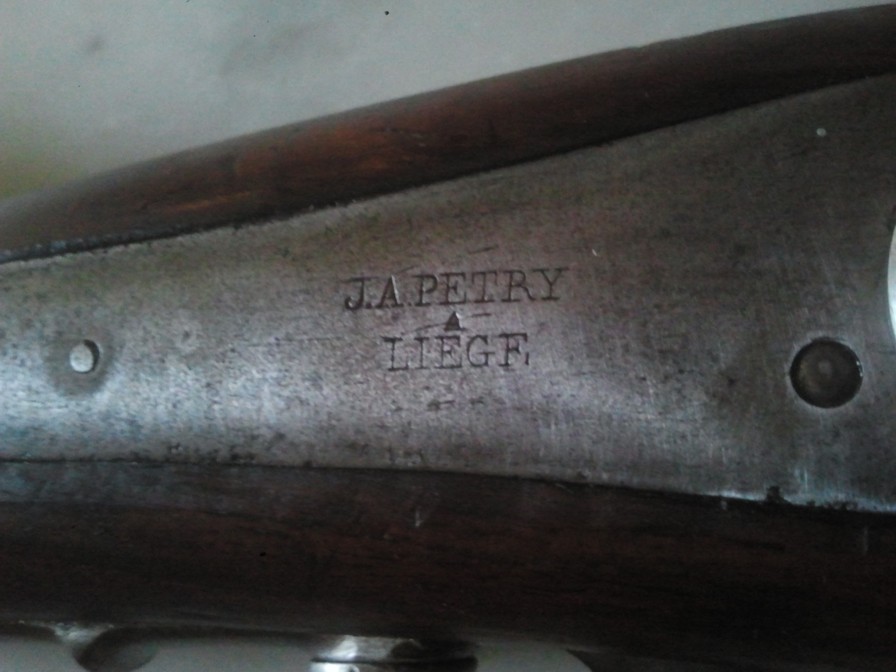







J.A. Petry Fils
Marked "C. SHARPS / PATENT 1859" in a circle around the hammer screw on both sides of the frame. These marks indicate that this was one of the few pistols licensed by Christian Sharps for manufacture in Europe.
However, the top of the barrels are engraved "J A PETRY FILS / A LIEGE" and this firm was not one of the licensed.
It's possible that they were dealers instead of the actual makers, since it shows a great similarity to those pistols made by Ghaye, who was one of the licensees. Besides the lever, there is also a sliding safety at the rear of the hammer. Both of these features were shown on Sharps' original patent.
Not shown on the patent are the rotating extractors mounted on both sides of the breech and the separate rear end of the barrel required for their operation. Other features that seem more related to Sharps 1861 patent as used on the Sharps & Hankins include the shape of the lever, the lever catch, and the exterior trigger spring, screwed to the bottom of the frame spur. The extractors have operating arms at the rear of the standing breech. The front ends are shaped to clear the rims of the ridges when the arms are in the raised position. When the arms are down, edges of the front go in front of the rims. There are holes in the added breech of the barrel to accept the front end of the extractor in either position. There are individual holes in the face of the standing breech for the nose of the firing pin.
The frame has typical Belgian shell and scroll engraving. A Liege proofmark and a "crown / V" proofmark appear on the bottom of the barrel. A long inscription "Prince Hovansky / to his best friend / Richard Conrads" is engraved in script on the frame above the hammer. Neither of these has been identified. Only a handful of these lever action four barrel pistols are known.
Who’s Who manufacturers of weapons of Liège teach us that Petry J. Auguste was registered with the proofhouse of Liege of 1842 to 1867. In 1862, it deposits a Belgian patent for a closing of rifle loaded by the breech.
